Donate
| SECTION I | ---------------------------------- | GENERAL |
| SECTION II | ---------------------------------- | POINT AND AREA RECONNAISSANCE AND SURVEILANCE |
142. Purpose of Reconnaissance Patrols Reconnaissance patrols provide the commander with timely, accurate information of the enemy and the terrain he controls. This information is vital in making tactical decisions.
143. Missions.
a. The commander asks questions about the enemy and about terrain. These questions are missions for reconnaissance patrols. For example:
(1) Questions about the enemy.
Where is he located~ What is his strength at a certain location? How is he equipped? What is he doing?
(2) Questions about the terrain.
How deep are the streams? How wide? Are the banks too steep for armored vehicles? Are bridges and roads in the area mined or damaged?
b. There questions are answered by successful accomplishment of the mission.
144. Types of Reconnaissance and Surveillance.
There are two types or reconnaissance and surveillance:
a. Point Reconnaissance and Surveillance.
The commander may require information of a specific location or small specific area, usually a known or suspected position or activity. A point reconnaissance patrol secures this information by reconnoitering the location or by maintaining surveillance over the locution.
b. Area Reconnaissance and Surveillance.
The commander may require information of an extended area, or may desire information of several locations within an area. An area reconnaissance patrol secures this information by reconnoitering the area, by maintaining surveillance over the area, or by making the coordinated point reconnaissance of designated locations within the area.
145. Size.
The minimum size of a rec0nnai1;1sance patrol is two men. There is no maximum. Above the minimum of two men, size is determined by the mission to be accomplished (para 122).
146. Arms and Equipment.
a. Arms.
Unless a patrol expects, and is authorized, to fight to accomplish its missions, arms are limited to individual weapons and grenades. At least one weapon with automatic fire capability is carried to provide a degree of high volume fire in case of unavoidable enemy contact.
b. Minimum Equipment.
Every patrol carries certain minimum items of equipment, even when the patrol consists of only two men.
(1) A pencil and notebook by each member for making notes and sketches.
(2) Two compasses.
(3) Two watches.
(4) Two pairs of binoculars (day and night).
(5) Two pairs of wire cutters.
(6) Two sets of maps (if maps are required).
(7) Two flash lights (if the patrol is to operate during darkness).
(8) Communication equipment required for control and/or reporting.
c. Other Equipment.
A patrol is otherwise equipped as necessary for accomplishing the mission. Some items which may be useful are as follows:
(1) A camera for photographing positions, weapons, signs, buildings, and equipment. The type which develops and prints the picture in one operation is ideal.
(2) Infrared equipment and other night vision devices, especially in darkness.
(3) Lightweight radar, especially on a surveillance mission.
(4) A scout dog team to assist in security and in locating positions.
(5) Booby traps and demolitions, when the opportunity for installation is expected to arise.
(6) Field expedient antennas to increase range of radios.
147. General Conduct
a. In addition to reaching the objective without discovery, if possible, a reconnaissance patrol also tries to conduct its reconnaissance or surveillance without being discovered (para 134). Stealth, patience, and maximum use of concealment are mandatory.
b. A reconnaissance patrol fights only to protect itself or, when authorized, to accomplish its mission. The commander dispatching the patrol 1s responsible for informing the patrol whether it 1s to fight, if necessary, to accomplish the mission.
c. "Reconnaissance by fire" may be authorized as a technique for locating enemy positions. In this technique, designated patrol members fire at known or suspected enemy positions in order to draw return fire which reveals positions of men and weapons. "Reconnaissance by fire" compromises the secrecy of the patrol. It is used as a last resort to prevent failure and only when authorized by the commander.
d. Day and night reconnaissance patrols use essentially the same techniques. The principal differences are:
(1) Day reconnaissance requires greater use of concealment. The patrol is more likely to be seen than at night and will not usually be able to move as close to the objective.
(2) Night reconnaissance requires great use of stealth. Sounds carry farther at night and reduced visibility usually requires closer approach to the objective.
e. When two or more teams of a patrol are to assemble at a rendezvous point, one team is designated to secure the rendezvous point for the arrival of other teams. The route and tasks of this team are arranged so that it can reach the rendezvous point first and accomplish this task.
SECTION II. POINT AND AREA RECONNAISSANCE AND SURVEILANCE.
148. Actions in the Objective Area (Point).
a. Point Reconnaissance.
The patrol is halted and concealed near the objective, usually at the objective rallying point. The leaders reconnoiter to confirm location of the objective, plans for positioning of teams, and plans for accomplishing the mission. Security teams, when used, are positioned so that they can secure the objective rallying point, provide early warning of enemy approach, protect the reconnaissance element, or any combination of these tasks. The reconnaissance element then reconnoiters the objective. This is done by the method best suited to the terrain, the layout of the objective, and the requirements of the mission. Several methods for reconnoitering the same objective are shown in figure 81. When the reconnaissance is completed, all information gained is disseminated to all patrol members ( fig. 82). A preliminary report is made if radio contact is possible. A full report is made as early as possible.
b. Point Surveillance.
The same general procedure is followed for the conduct of point surveillance. In surveillance, however, teams are positioned at vantage points near or around the objective and observe for required periods, moving from position to position as required to accomplish the mission.
149. Actions in the Objective Area (Area)
a. Area Reconnaissance.
The leaders' reconnaissance is conducted, security teams positioned, and reconnaissance teams sent out as in a point reconnaissance mission. When the entire patrol is used to reconnoiter the area, each team is a reconnaissance and security team, providing its own security. "When teams are not to return to the objective rallying point, they assemble at a rendezvous point such as a patrol uses to assemble after infiltration or exfiltration (para 139). This method of assembly might be used when teams must avoid moving through an area twice or when the objective is approached :from the rear: Several methods are shown in figure 83.
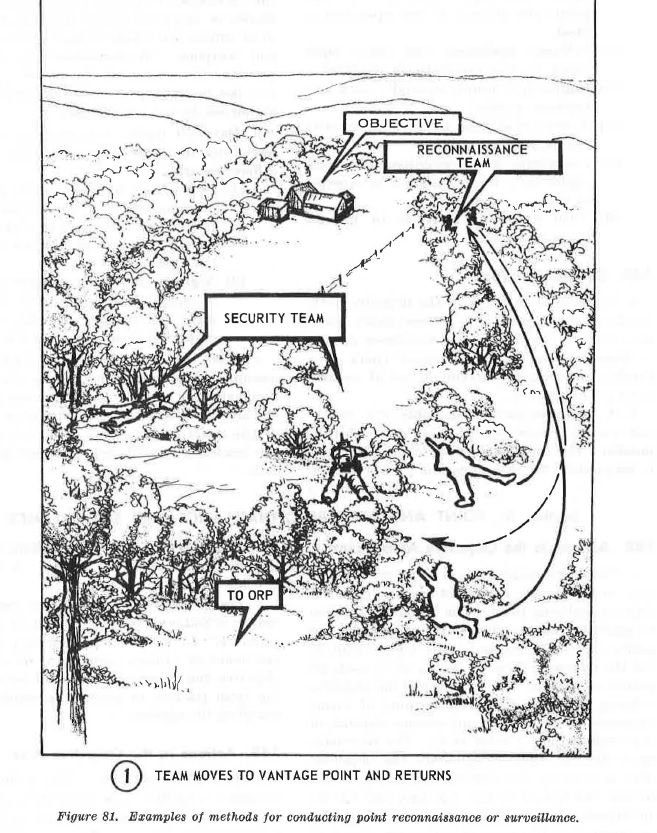
Figure 81. Examples for methods for conduct point reconnaissance or surveillance.
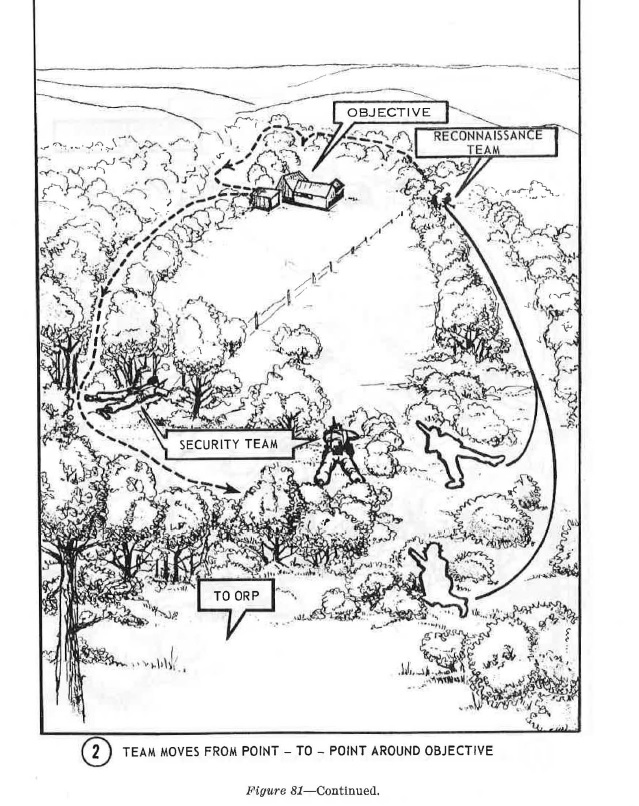
Figure 81. Continued.
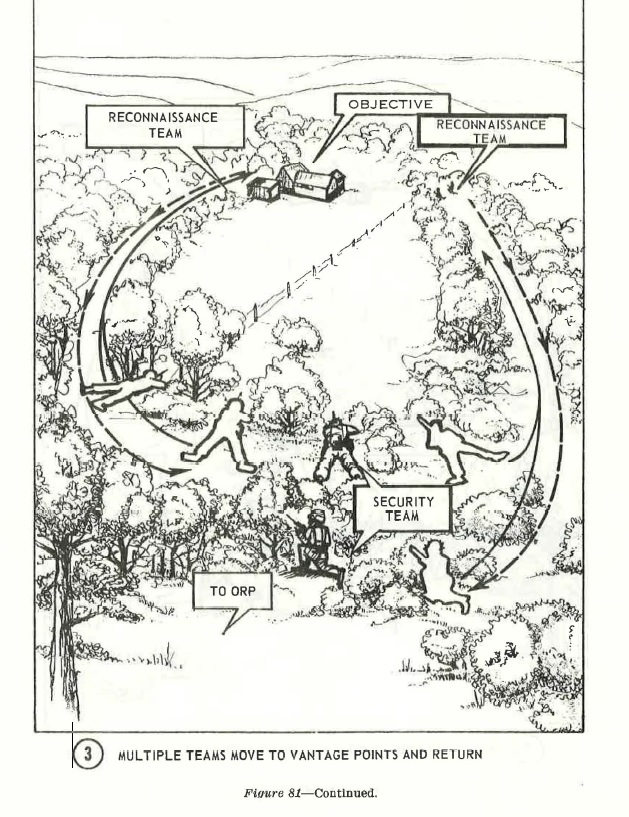
Figure 81. Continued.
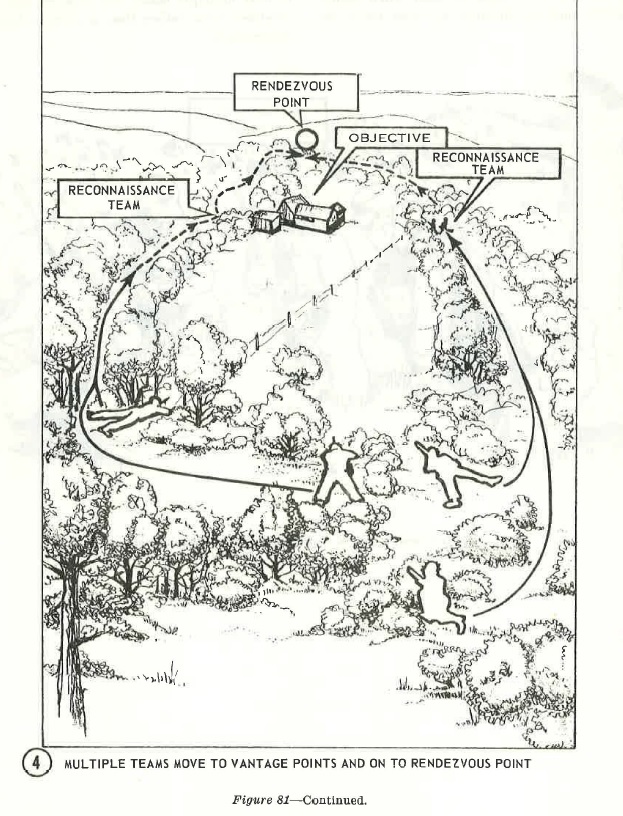
Figure 81. Continued.
b. Area Surveillance.
This is conducted in the same manner as point surveillance, differing only in that multiple teams are required and that, an extended area, rather than a point is kept under surveillance.
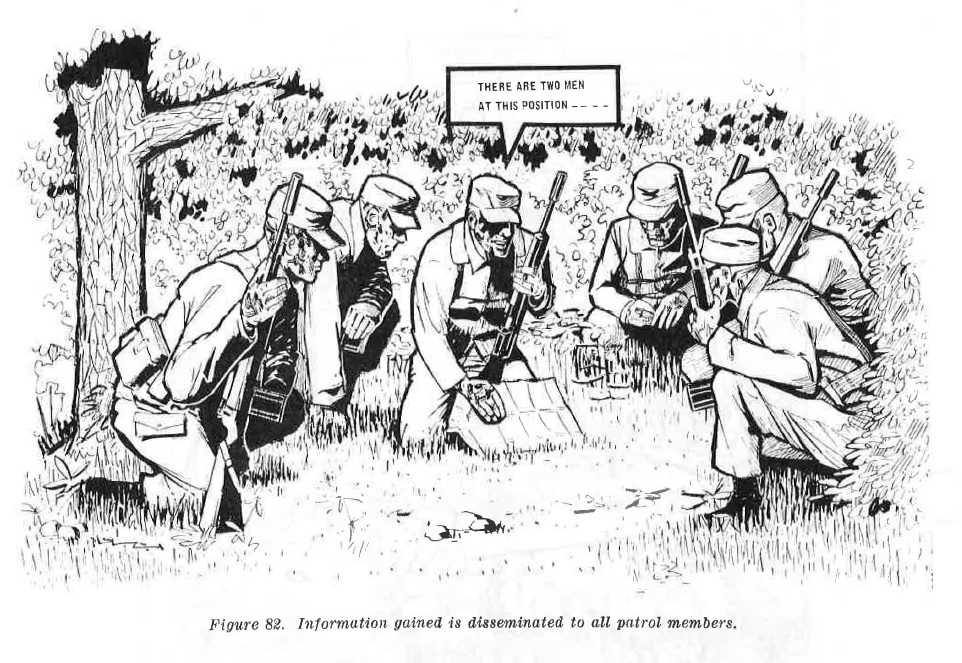
Figure 82. Information gained is disseminated to all patrol members.
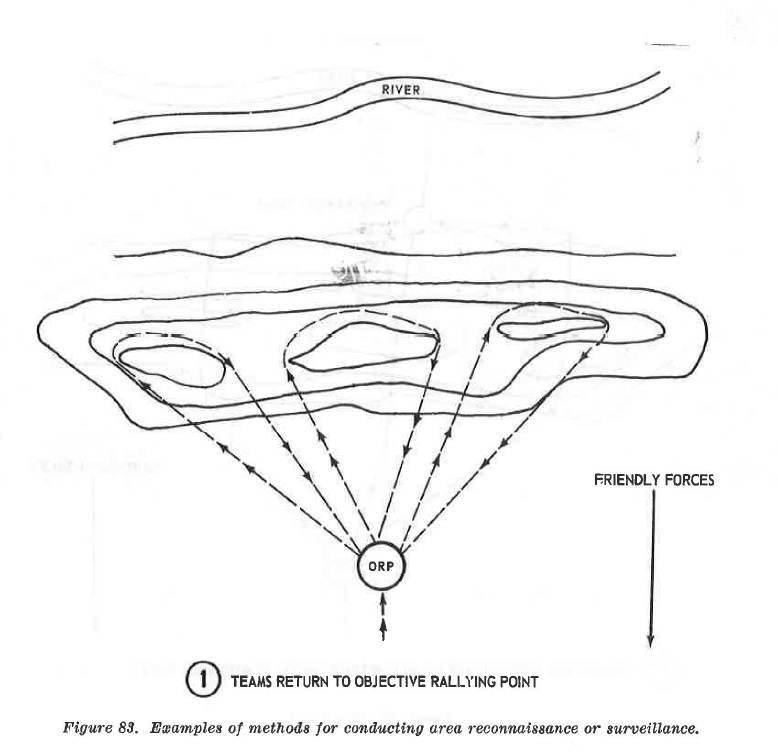
Figure 83. Examples of methods for conducting area reconnaissance or surveillance.
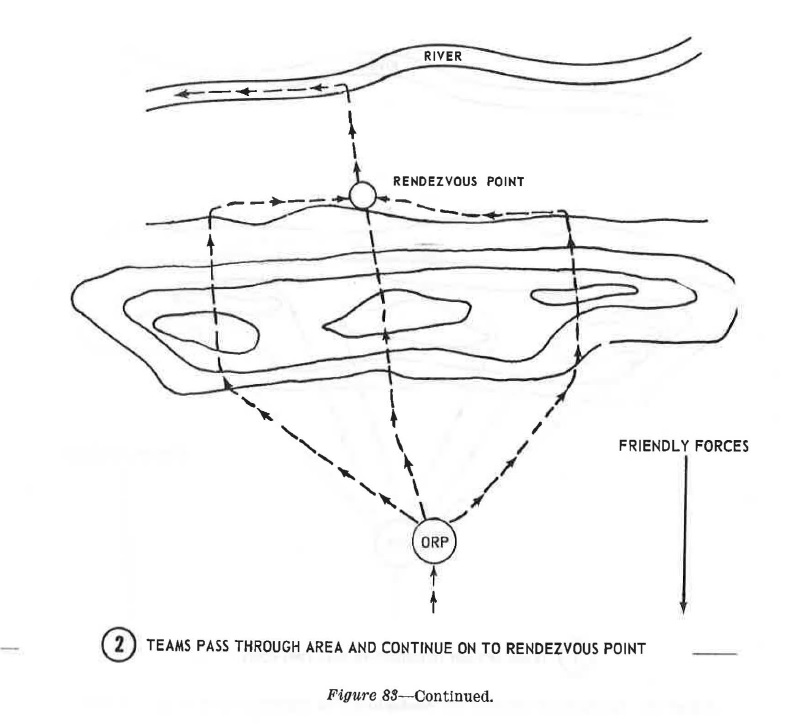
Figure 83. Continued.
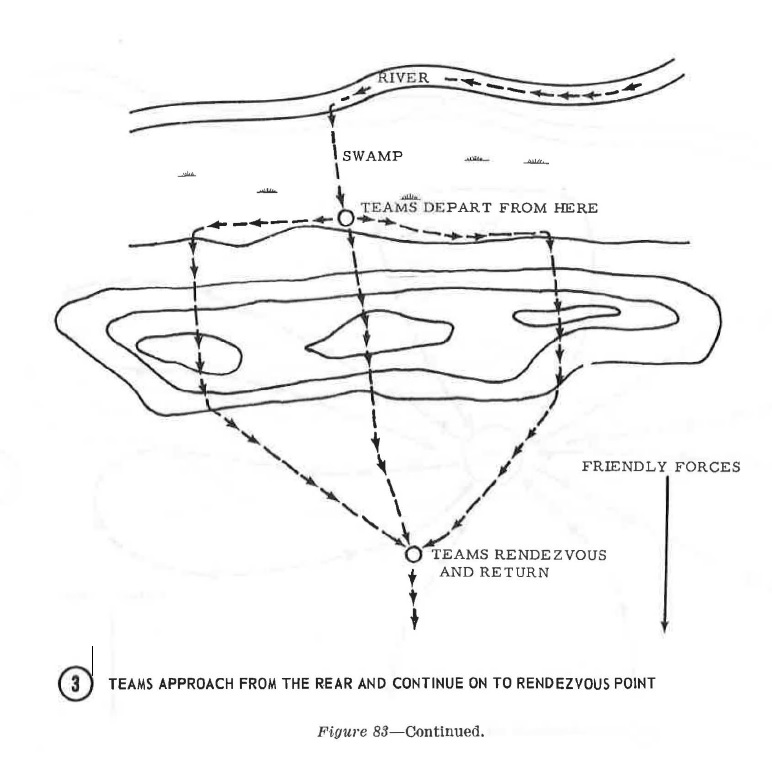
Figure 83. Continued.
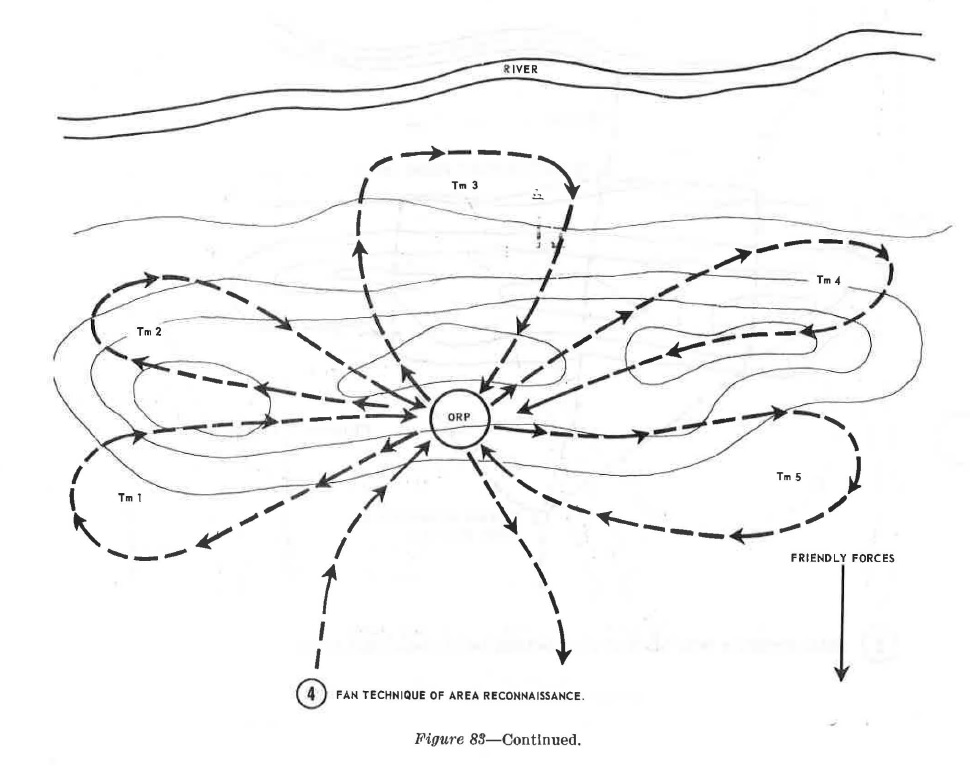
Figure 83. Continued.
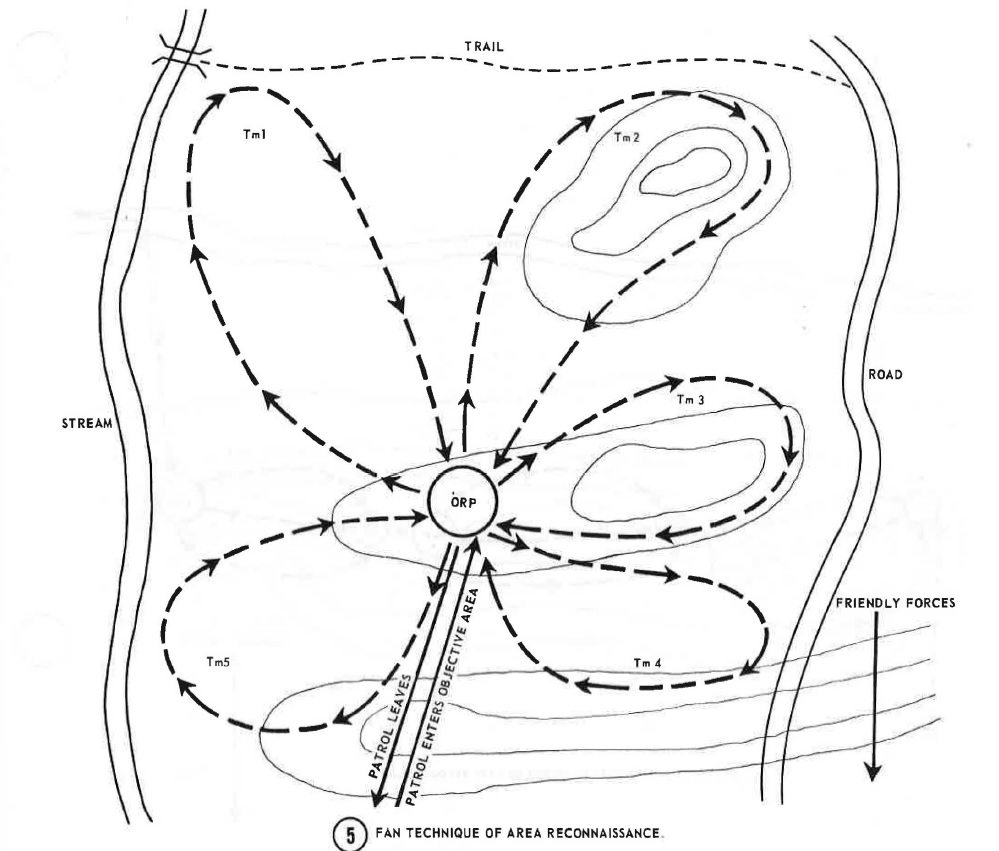
Figure 83. Continued.
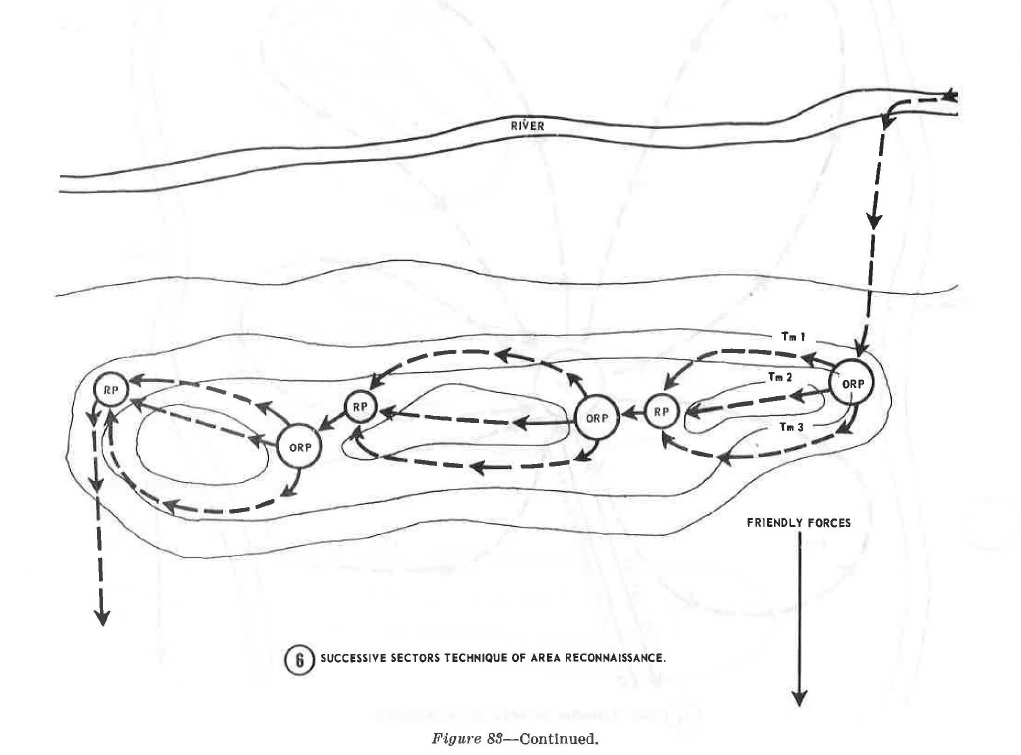
Figure 83. Continued.
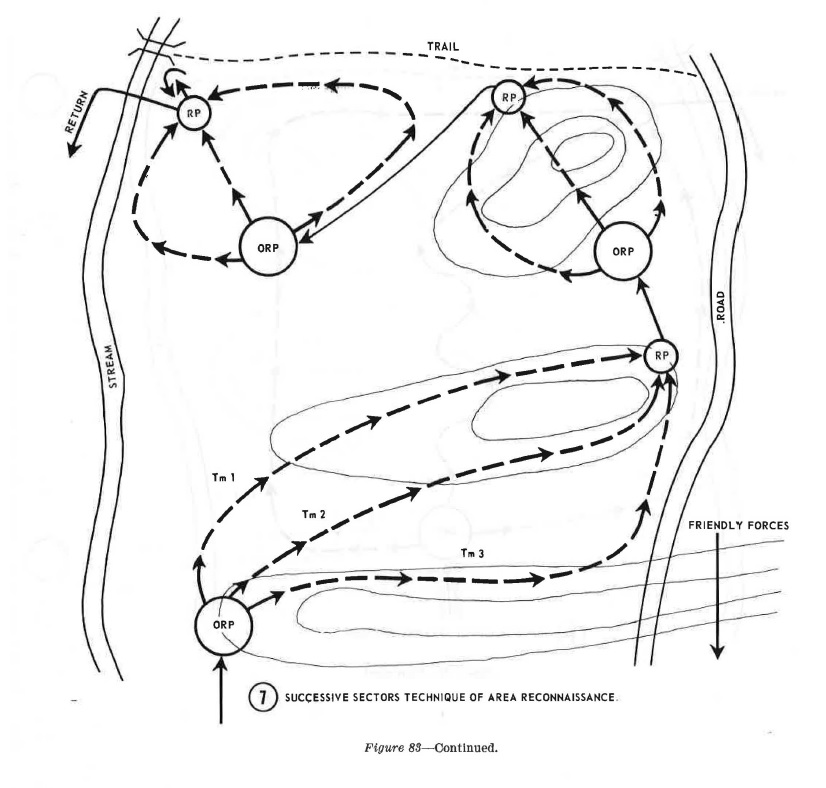
Figure 83. Continued.
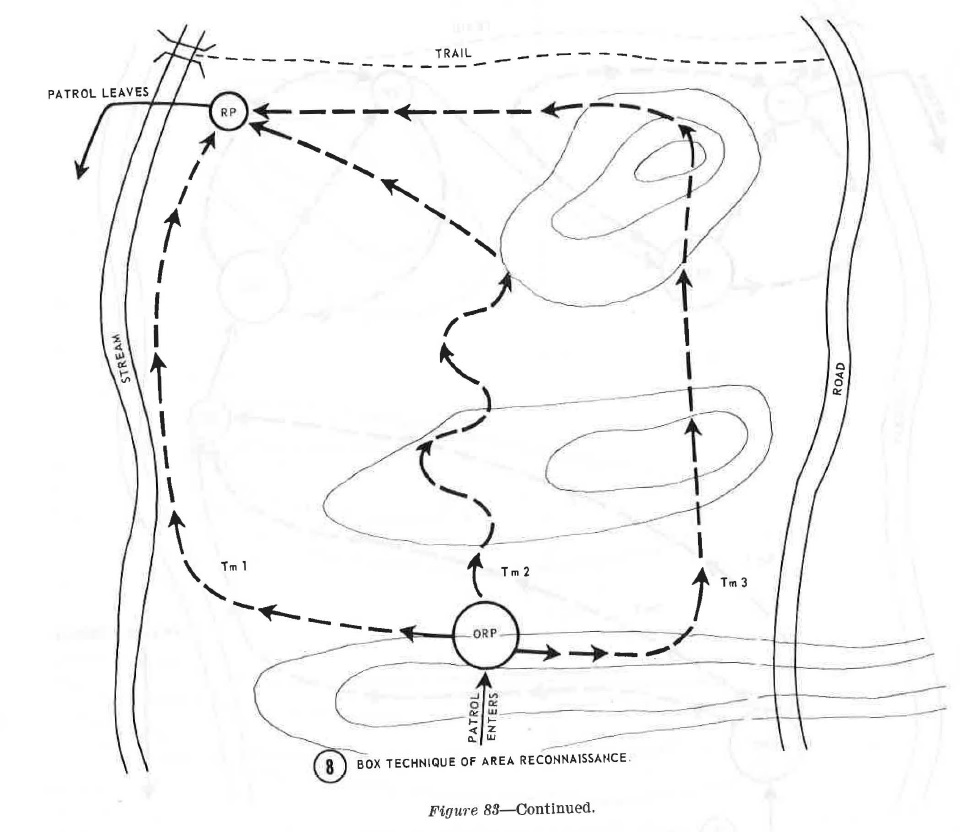
Figure 83. Continued.